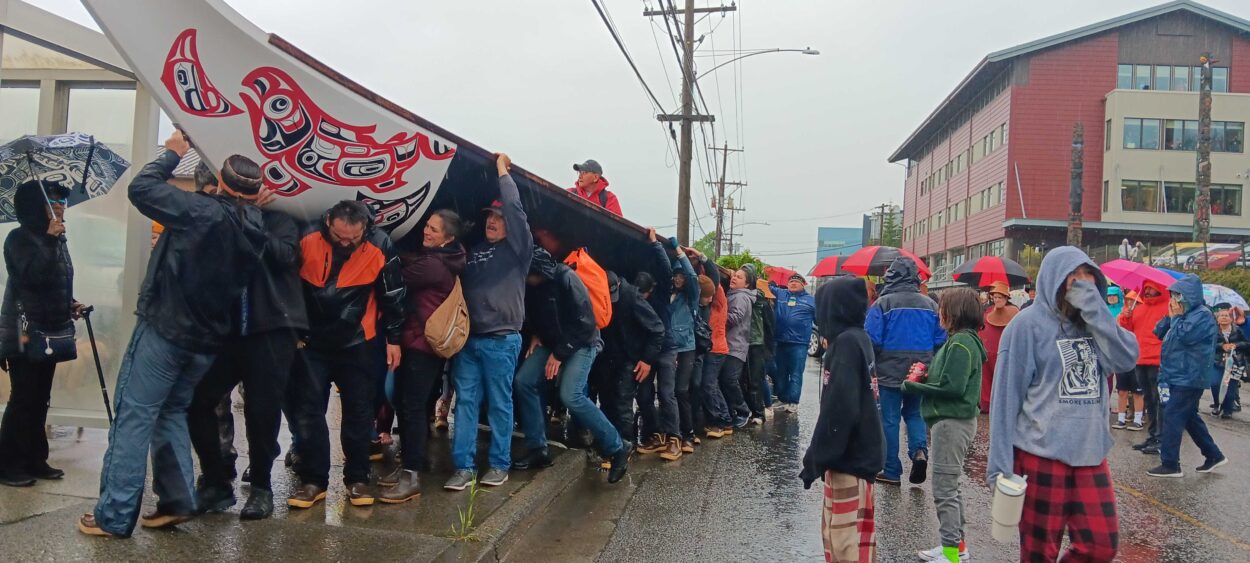
Pouring rain didn’t stop a special ceremony honoring a one-of-a-kind canoe last week. Tribal members and Ketchikan residents gathered to awaken and launch a canoe designed by a late master carver and artist who called Ketchikan one of his homes.
Dozens of people shouted in the Haida language as they heave together, carrying the canoe to the Bar Harbor boat launch from Ketchikan Indian Community’s Tongass Avenue building. The canoe has a fiberglass hull with wood underneath, and is painted red, white, and black. A design of running salmon swirls around the canoe.
When someone grew tired, another stepped in. It’s a show of teamwork, and of strength.
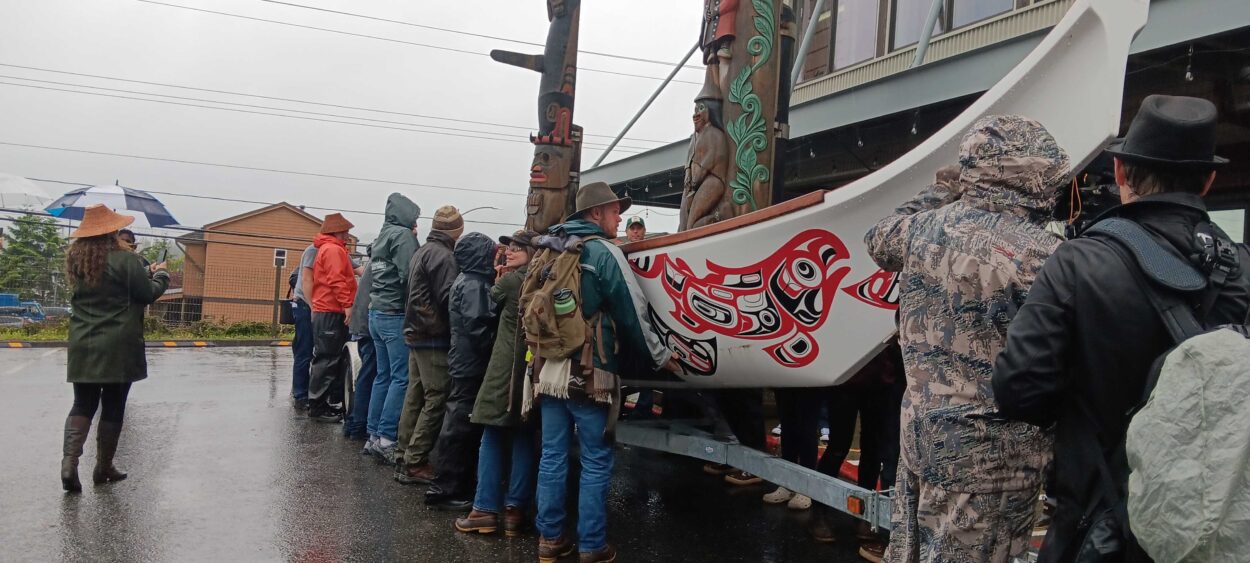
Earlier in the afternoon, a big crowd of tribal members and Ketchikan residents had gathered for an awakening ceremony. The canoe was designed by the late Marvin Oliver, Quinault and Isleta-Pueblo. Oliver owned Alaska Eagle Arts in downtown Ketchikan, but also had art installations around the world, in Canada, Japan and Italy. He was a professor and a curator at the University of Washington and the Burke Museum, respectively, and had won the Charles E. Odegaard Award from the University of Washington for his work in diversity.
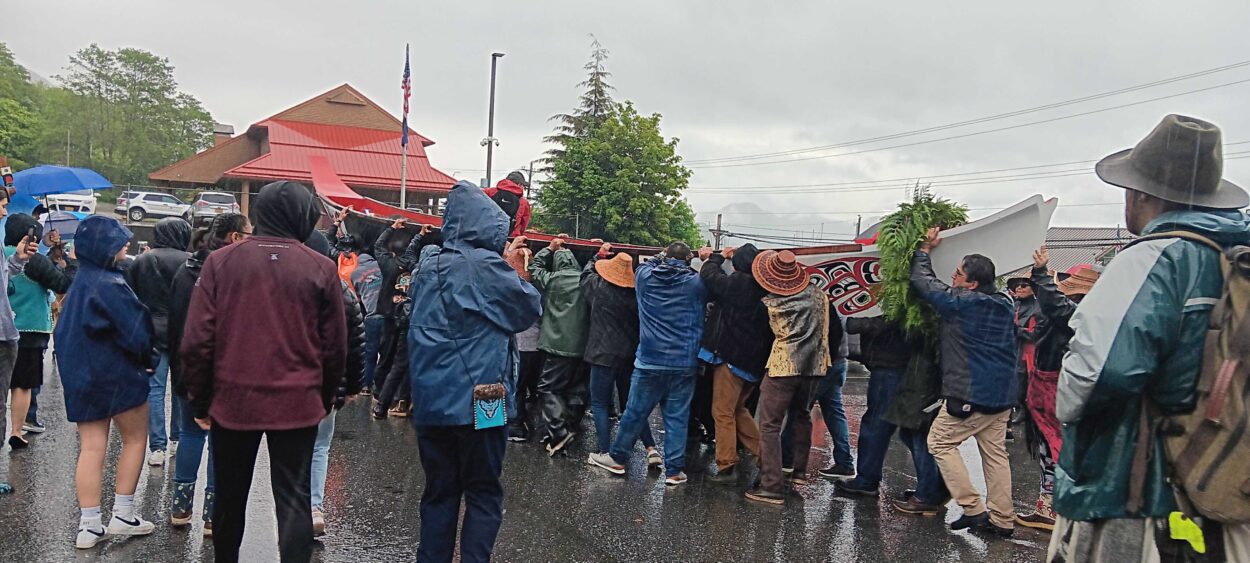
Canoes run in the family — Oliver’s father created the “Paddle to Seattle” in 1982.
Several speakers shared their thoughts during the awakening part of the ceremony, before the launching. They included Ketchikan Indian Community staff and tribal members, and Oliver’s family.
His wife, Brigette Ellis, stood in front of her husband’s creation alongside her family. She talked about respecting the canoe’s place in Indigenous culture.
“First thing I want to share with you is you never say the ‘B-word,'” Ellis said. “Okay? It’s spelled B-O-A-T. But we don’t say the ‘b-word.’ In traditional canoe culture, the canoe is always a canoe and never the ‘b-word’.’ It is said if a paddler speaks of the vessel as a ‘b-word,’ that paddler will be thrown into the water. You learn really fast to call it a canoe at all times.”
She said that Oliver felt connected to canoes because of his father’s role in the “Paddle to Seattle,” and his Salish heritage.
“The canoe revitalization will empower the youth. That’s what he and I had in mind to carry these important traditions forward,” Ellis explained. “It’s the canoe that fosters a healthy sense of identity among young Indigenous people. Those youth that struggle emotionally come together and say, ‘canoe culture is a life changing event.’”
Oliver died in 2019. But the year before, the tribe’s council bought the canoe.
SaanuGa Gianna Willard was a big advocate for buying the canoe, according to a KIC statement. A former tribe president, Willard has taken 14 canoe journeys around Alaska, Canada and Washington.
“When she was KIC President, she made it her biggest goal to secure a canoe for the tribe, and purchased this beautiful fiberglass canoe designed by Marvin Oliver while he was still alive,” the statement from KIC reads.
Tribe leaders say that the canoe — and canoe journeys — advance’s the tribe’s strategic plan – which focuses on uniting the community and spreading culture.
Norman Skan is the Ketchikan Indian Community President.
“We already have our dance, we have our arts, we have our subsistence food,” he said. “And this is just another component of the wholeness that we are slowly becoming.”
The canoe also received its name.
Brothers Richard and Willie Jackson named the canoe X’oots kuye’ik, or Brown Bear Spirit. Willie Jackson explained their choice.
“He is your protector on the water,” he said. “He is your protector on this canoe.”
He led the crowd through a chant of the canoe’s name.
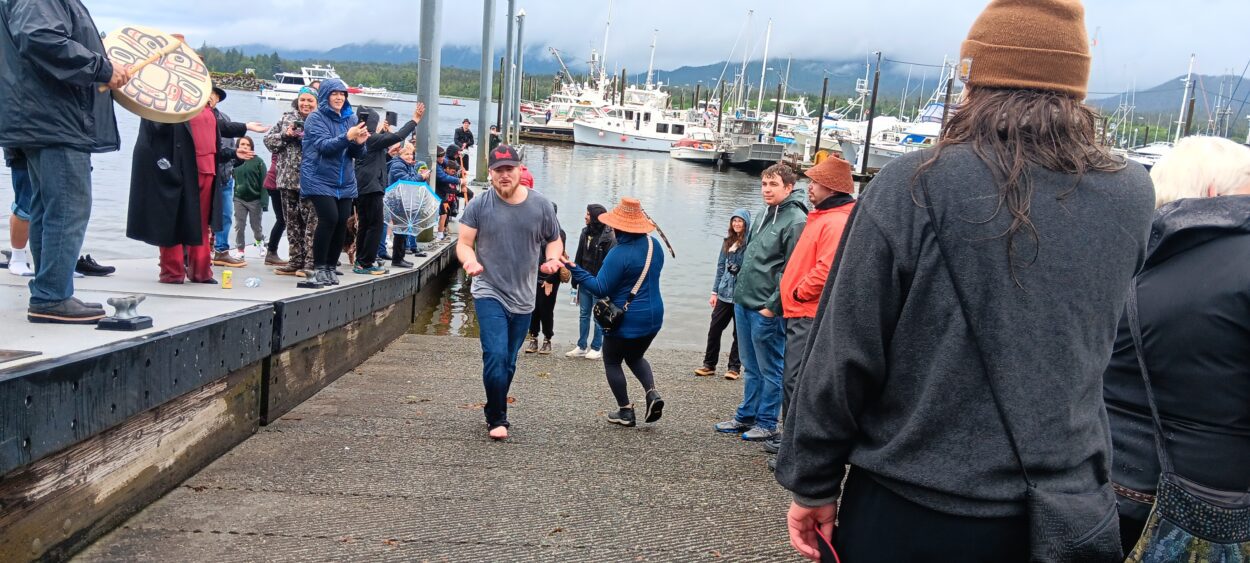
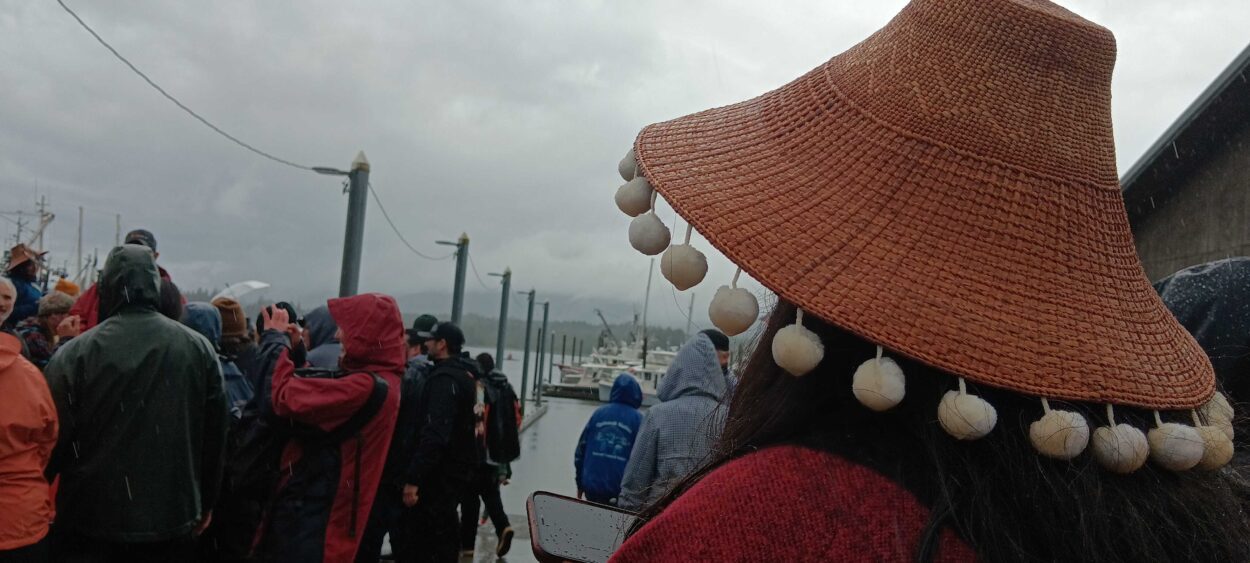
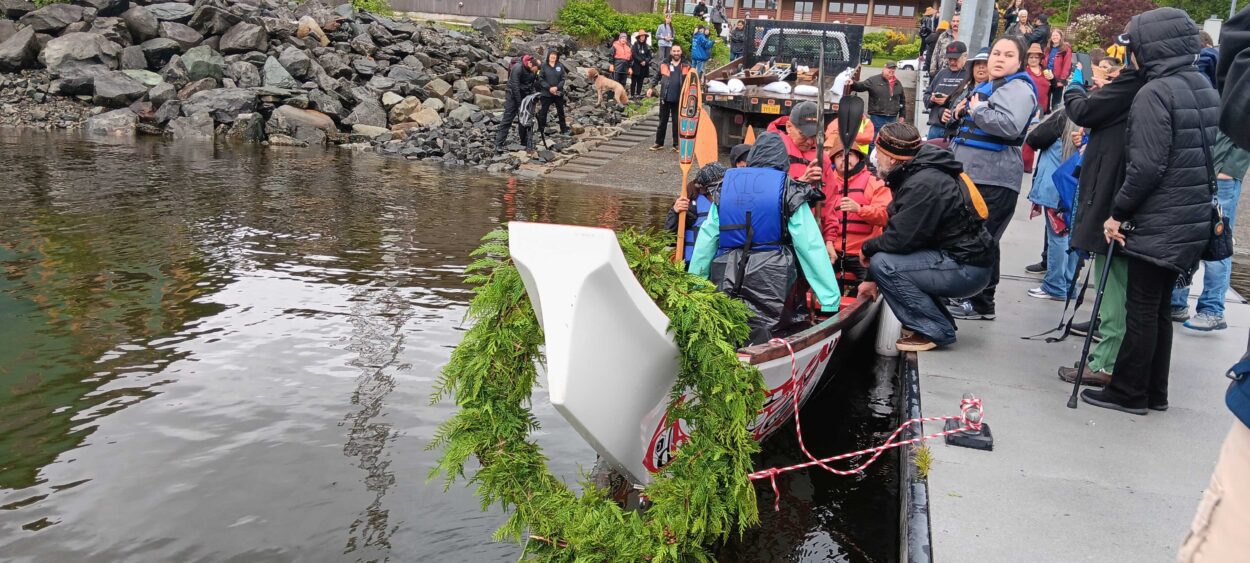
Before the canoe is carried into the water, there was drumming, singing, and an acknowledgement of the Indigenous people who have lived on the land since time immemorial. Adults lifted up children and help them drape cedar boughs on the canoe.
After the canoe was floating, the mood was joyous. There was dancing and singing. Some wore cedar hats and drummed, and others danced in their soggy jeans and sneakers.
Raegan Miller is a Report for America corps member for KRBD. Your donation to match our RFA grant helps keep her writing stories like this one. Please consider making a tax-deductible contribution at KRBD.org/donate.








